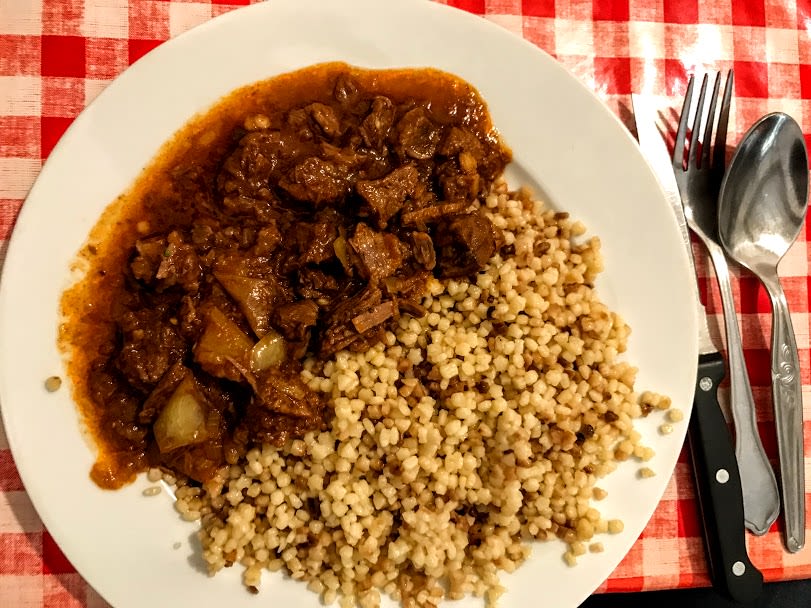These adorably unsexy, mom-and-pop greasy spoons have been essential to Budapest dining for almost a century. But now, they are on the brink of extinction. Go visit them before it’s too late.

Of Budapest’s myriad dining and drinking establishments, it’s unsurprisingly the fashionable places that get most attention. Specialty coffee shops that brew expert filter coffees, glossy international restaurants with mid-century furnishings, and craft beer bars hawking hop-forward IPAs. I also enjoy these trendier spots, but often prefer their antithesis: small, humble, unpretentious local eateries. If you're interested plunging into the unknown and experiencing the truly local side of Budapest: Welcome to an étkezde.
Grandma’s recipes
Étkezdes are mom-and-pop neighborhood restaurants in Hungary serving wallet-friendly traditional dishes from a short, daily-changing menu. The interior of an étkezde is usually plain and free of decorations, save for the obligatory faded photos on the walls showing celebrities who’ve visited over the decades. Customers sit elbow-to-elbow and strangers are expected to share tables. Compared with a regular restaurant, an étkezde is smaller, cheaper, and is closed on weekends. Only a few classic étkezdes remain today within central Budapest, down from what used to be dozens in the early aughts.

An étkezde in Hungary is similar to an osteria in Italy, although étkezdes don’t serve alcohol. The étkezde crowd is usually male-heavy, part blue collar, part low-level bureaucrats, part elderly citizens. Many are on a first-name basis with the ever-present proprietor, who often doubles as the server. A common étkezde scene: playful banter between customers and the owner, invariably at the expense of one another’s masculinity, cognitive skills, or favored soccer team.
Most étkezdés that survived to the present day did so for good reason. Part of their enduring appeal is the homemade Hungarian classics – chicken paprikash, schnitzel, stuffed cabbage – that come out of their undersized kitchen. Essential étkezde staple is also the főzelék, wonderfully creamy stews made from seasonal vegetables, usually peas, squash, spinach, savoy cabbage, lentils, or potatoes, and topped with meatloaf, sausage, or a hard-boiled egg.
Lecsó, packing ripe bell peppers, tomatoes, and crisped-up sausages, is another standout. People usually round out their meal with a noodle dish, which could be túrós csusza, noodles blanketed in sour cream, túró, and crispy pork cracklings, or mákos tészta, noodles coated in ground poppy seeds and powdered sugar.
Although the menus change daily, there are some unspoken, hard-wired routines all regulars are well aware of. Fridays, for example, are “offal days” at Kívánság, a charming longtime étkezde in District 6. Kádár Étkezde, which sadly closed its doors during the pandemic, used to serve cholent (sólet), the classic sabbath dish, every Saturday (it was an exception in being open on Saturday).

Since moderate prices are key to an étkezde, most of these dishes use basic, inexpensive ingredients that are readily available in Hungary. To keep prices low, owners often embrace creative workarounds. “Hamis gulyás,” which translates to “phony goulash,” denotes a meatless goulash soup, prepared only with vegetables and egg dumplings (it tastes much better than it sounds).
Dishes originally made with beef can be swapped out for cheaper meats like chicken or pork. A two-course meal will rarely exceed €9, and small-portions are usually available at a reduced price for those with a small appetite or low budget. At these price points, étkezdes need to turn tables quickly to survive. This is why no wines and beers are served and lingering, though not discouraged, isn’t common.
The dreadful Communist era
During the Communist period in Hungary (1947-1989), an era local gourmands remember as the "dark age of gastronomy," étkezdes were among the few lines of businesses permitted to operate as private enterprises. Unfortunately, this rarely meant an improvement in quality: with few exceptions, étkezés, along with regular restaurants, served forlorn-looking dishes made from questionable ingredients, using heavy, gut-busting sauces to mask the indistinct flavors. The cast of enervated and unfriendly waiters was insult to injury.
My content is free and independent. If you've enjoyed this article, please consider supporting me by making a one-time payment (PayPal, Venmo).
Accordingly, when Communism ended and the market opened up for other types of restaurants that were viewed as exotic – Italian and Chinese places, but also McDonald’s and Burger King – many étkezdes quickly folded, usually for good reason.
Vanishing étkezde culture
If the current trend continues, étkezdes will soon disappear from Budapest. Despite the fact that many étkezde owners are now past retirement age, the next generation doesn't seem to jump on the opportunity to take over. Étkezdes run on thin margins and turn profitable only when the owners themselves run the business instead of hiring someone.
“By 4:30 in the morning, I’m in the kitchen. What do you think makes my bone broth soup so flavorful?” asks Erzsébet Oláh, who, along with her husband Feri, run the popular Öcsi Étkezde in outer District 8. After 50 years of working in restaurants, Feri says they’ve had enough and decided to put the business up for sale earlier this year. Interest so far has been muted. “No one wants to work hard these days. An office job is just so much more comfortable” he says.
Tibor Szabados, owner of Kívánság Étkezde, has waited tables at his own restaurant for the past 35 years, while also being in charge of the day-to-day operations. He’s currently 79; one wonders for how much longer he will go on.

Of Budapest’s few remaining étkezdes, my favorites are Öcsi Étkezde and Kívánság. The tastiest dishes come out of Öcsi’s kitchen—there, you can hardly go wrong with anything. Be sure to arrive by 12:30 p.m., before Erzsi and Feri start to run out of things.
With its weathered interior, cast of aging regulars, and long-standing staff, Kívánság shows off best what the étkezde genre is about. Alarmingly, both of these Budapest treasures could easily be gone soon. Go visit them before it’s too late. Craft burgers can wait.